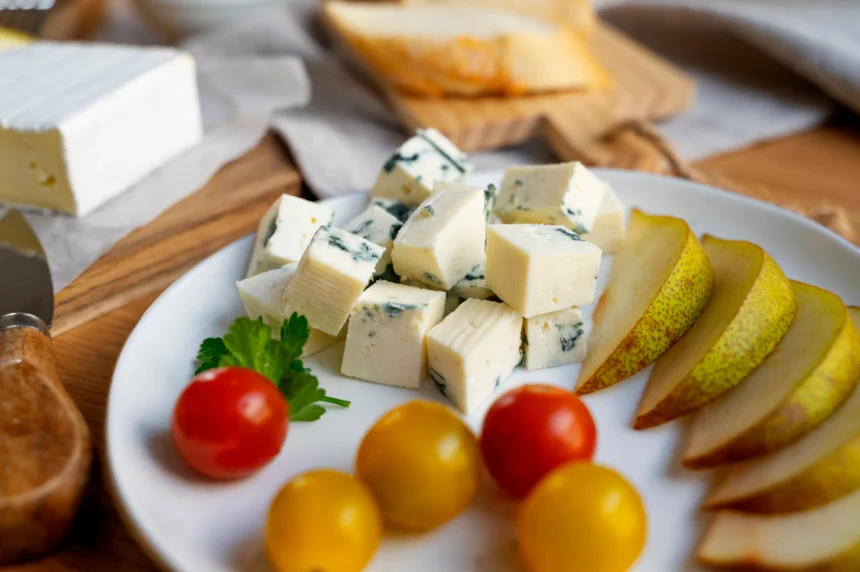Introduction
Cheese lovers are constantly on the lookout for distinctive flavors and textures, and Masgonzola is a name that has recently gained attention in culinary circles. While it may sound similar to the well-known Gorgonzola, Masgonzola offers a unique experience that sets it apart. This article will explore what Masgonzola is, its history, taste profile, and how it can be enjoyed, along with insights into competitors and practical recommendations for incorporating it into your diet.
What is Masgonzola?
Masgonzola is a type of blue cheese that combines rich flavors with a creamy texture. Often compared to traditional Gorgonzola, it is characterized by its slightly milder tang and a smooth, crumbly consistency. Unlike some commercial cheeses that are heavily processed, Masgonzola emphasizes natural ingredients and traditional production techniques, which appeals to food enthusiasts seeking authenticity.
It’s important to note that Masgonzola is still a relatively niche cheese, so it may not be widely available in mainstream supermarkets, but it has been gaining popularity in specialty stores and online markets in the USA.
History and Origins
The exact origins of Masgonzola are not extensively documented, which adds a touch of mystery to its appeal. Cheese historians suggest that it evolved from the Italian tradition of blue cheeses, likely inspired by Gorgonzola, which dates back to the 9th century in Northern Italy. Masgonzola’s production methods have been refined over time to create a milder and creamier alternative to traditional blue cheeses, making it suitable for a wider audience, including those who might find Gorgonzola too pungent.
Taste, Texture, and Varieties
Masgonzola offers a unique combination of mild tanginess, creamy texture, and subtle earthy notes. Unlike Gorgonzola, which can sometimes have a sharp bite, Masgonzola balances its flavors to appeal to both casual eaters and connoisseurs.
- Texture: Smooth and creamy, yet firm enough to crumble over salads or pasta.
- Aroma: Mildly nutty with slight blue cheese characteristics.
- Varieties: Some producers offer a younger, fresher version for a lighter taste, and aged versions for a stronger, more pronounced flavor.
Competitor Comparison
Masgonzola is often compared to:
- Gorgonzola: Sharper and more pungent; ideal for bold recipes.
- Roquefort: Made from sheep’s milk; stronger and saltier.
- Blue Stilton: Creamier than Roquefort, with a milder bite.
Health and Nutritional Benefits
Like many cheeses, Masgonzola provides essential nutrients when consumed in moderation. A standard serving contributes:
- Protein: Supports muscle repair and general health.
- Calcium: Essential for bone strength.
- Vitamins: Contains B vitamins for energy metabolism.
Masgonzola is naturally made with fewer additives compared to some mass-produced blue cheeses. However, it is still high in fat and sodium, so moderation is recommended, particularly for individuals with dietary restrictions.
How to Use Masgonzola in Cooking
Masgonzola’s versatility makes it suitable for a variety of dishes. Some practical ideas include:
- Salads: Crumble over arugula or spinach with walnuts and pears for a flavorful salad.
- Pasta: Melt into creamy sauces to add depth without overpowering other flavors.
- Appetizers: Spread on toasted baguette slices with a drizzle of honey or fig jam.
- Pairing: Complements white wines, light reds, or sparkling beverages.
Where to Buy Masgonzola in the USA
Since Masgonzola is a specialty cheese, availability may vary. Reliable options include:
- Specialty Cheese Shops: Look for local artisanal shops that import or produce small batches.
- Online Retailers: Websites offering gourmet cheeses often carry Masgonzola and deliver across the USA.
- Farmers’ Markets: Some producers may offer limited quantities locally.
Competitor Context
While Gorgonzola, Roquefort, and Stilton dominate the blue cheese market, Masgonzola offers a distinct niche for consumers seeking a milder, versatile alternative. Its emergence highlights a growing demand for cheeses that combine traditional methods with approachable flavors. For anyone exploring blue cheeses for the first time, Masgonzola can serve as a gateway cheese, balancing sophistication and ease of use.
Conclusion
Masgonzola is a unique cheese that deserves attention from anyone interested in expanding their culinary horizons. Its mild yet distinctive flavor, creamy texture, and versatility make it suitable for a variety of dishes, from salads to pasta. With thoughtful use in recipes and attention to proper storage, Masgonzola can be an enjoyable addition to your cheese repertoire.
Recommendation: Try Masgonzola in a simple salad or as a cheese board addition to experience its flavor profile firsthand. For those comparing options, it offers a milder, more approachable alternative to Gorgonzola, making it ideal for both beginners and seasoned blue cheese enthusiasts.






